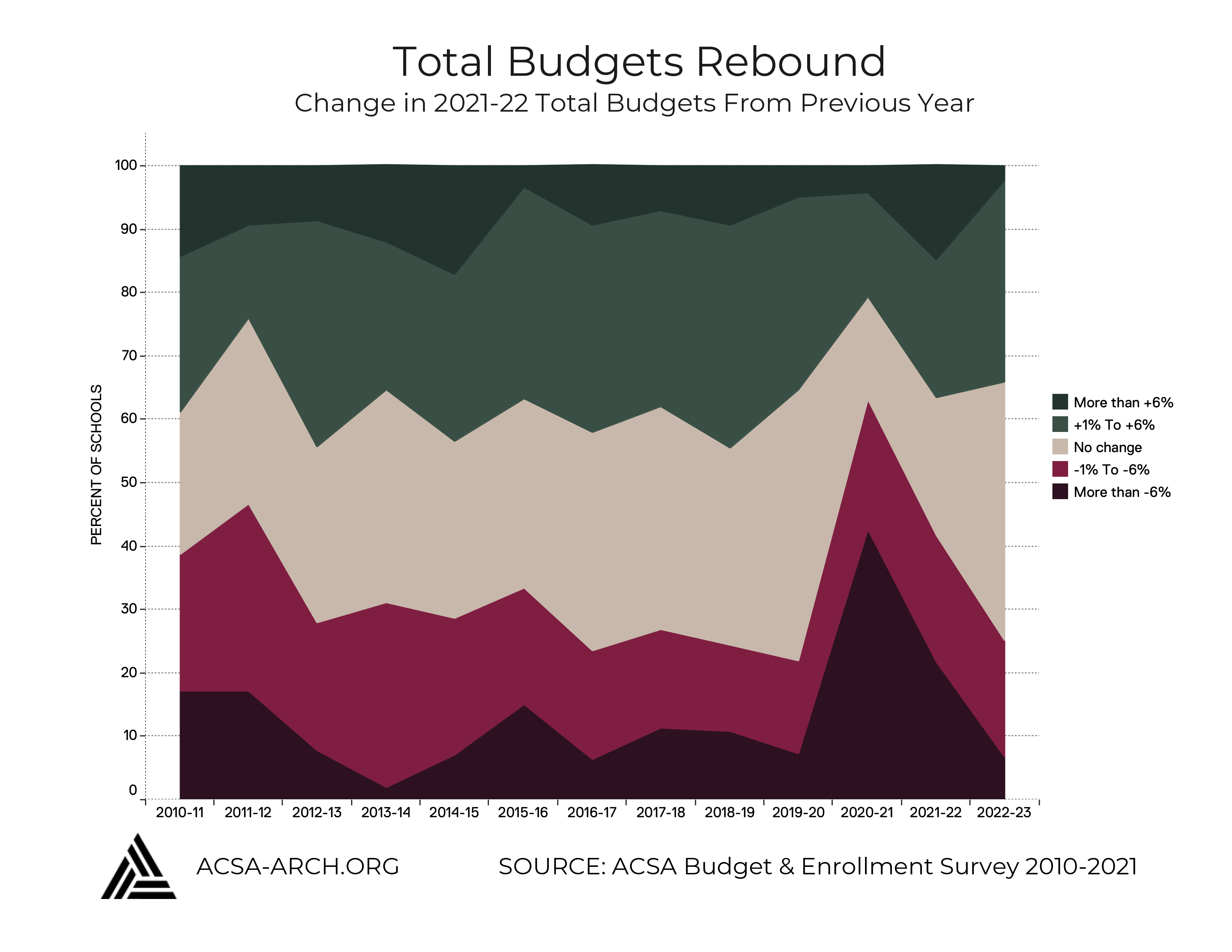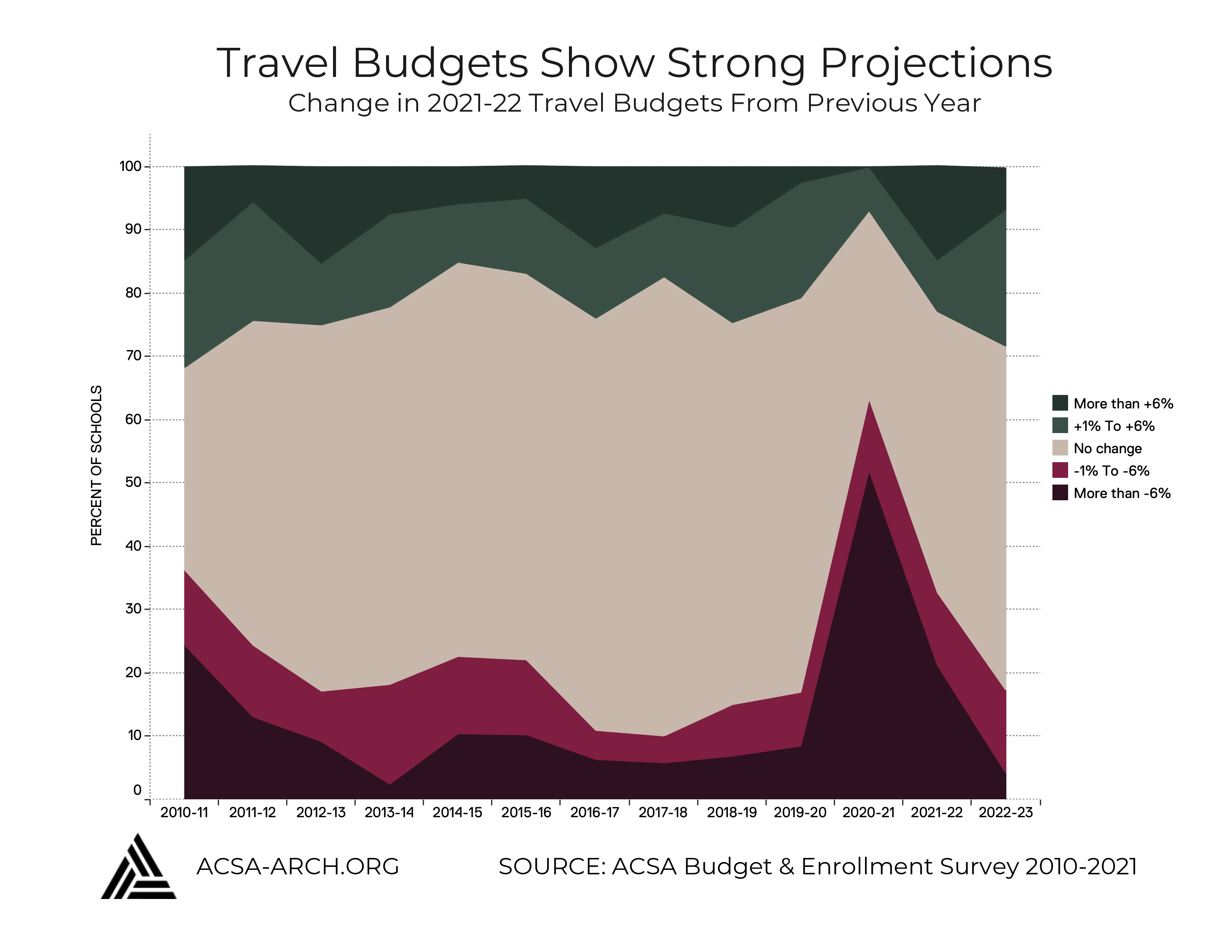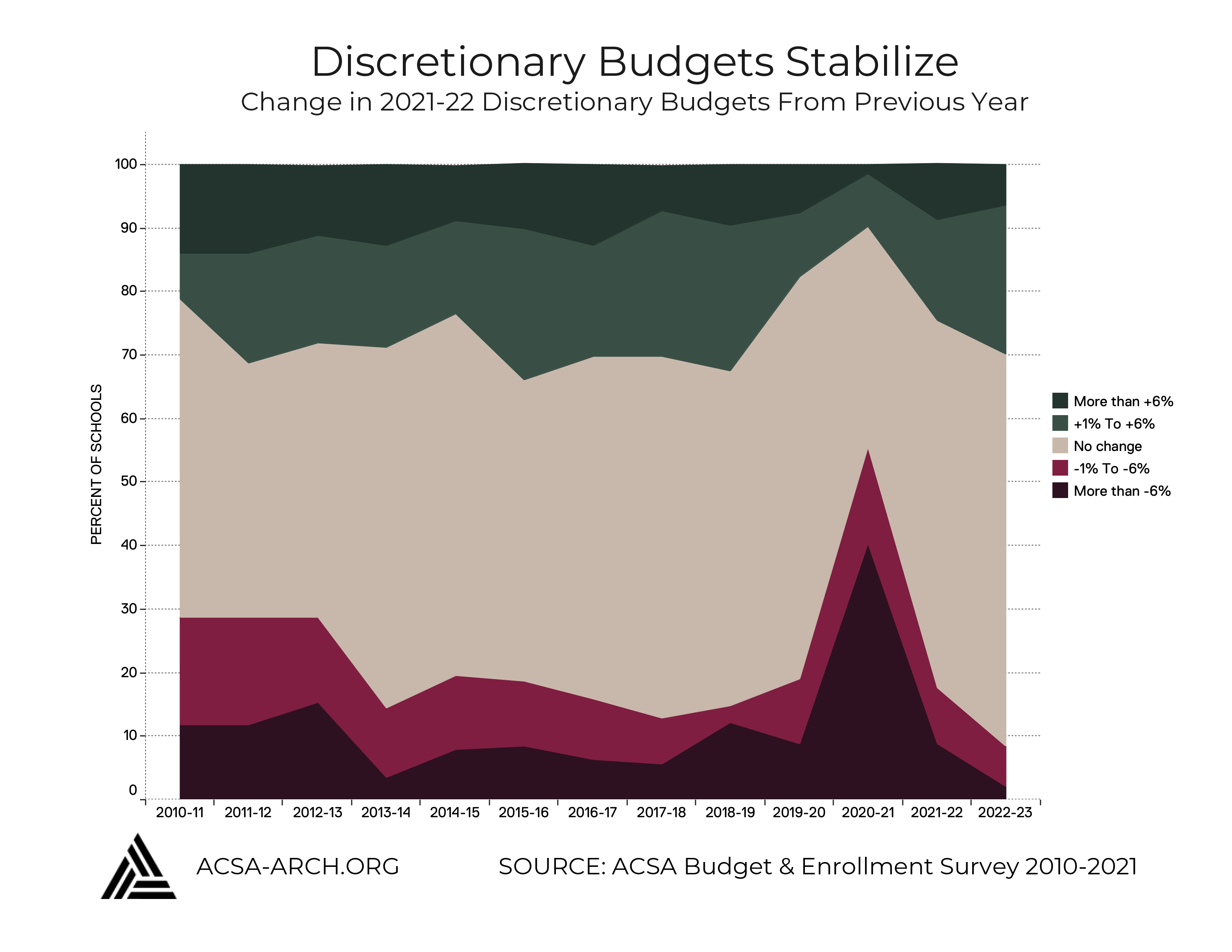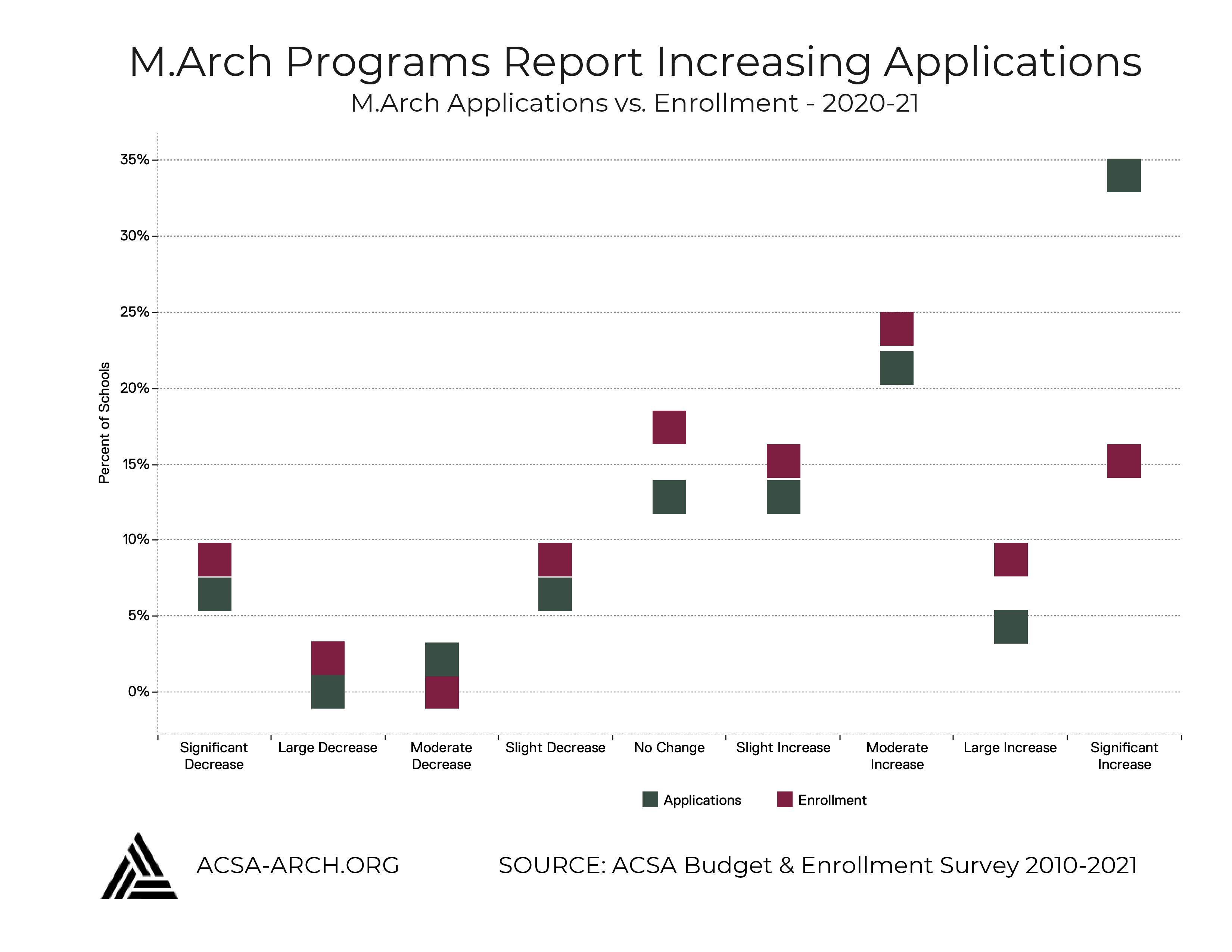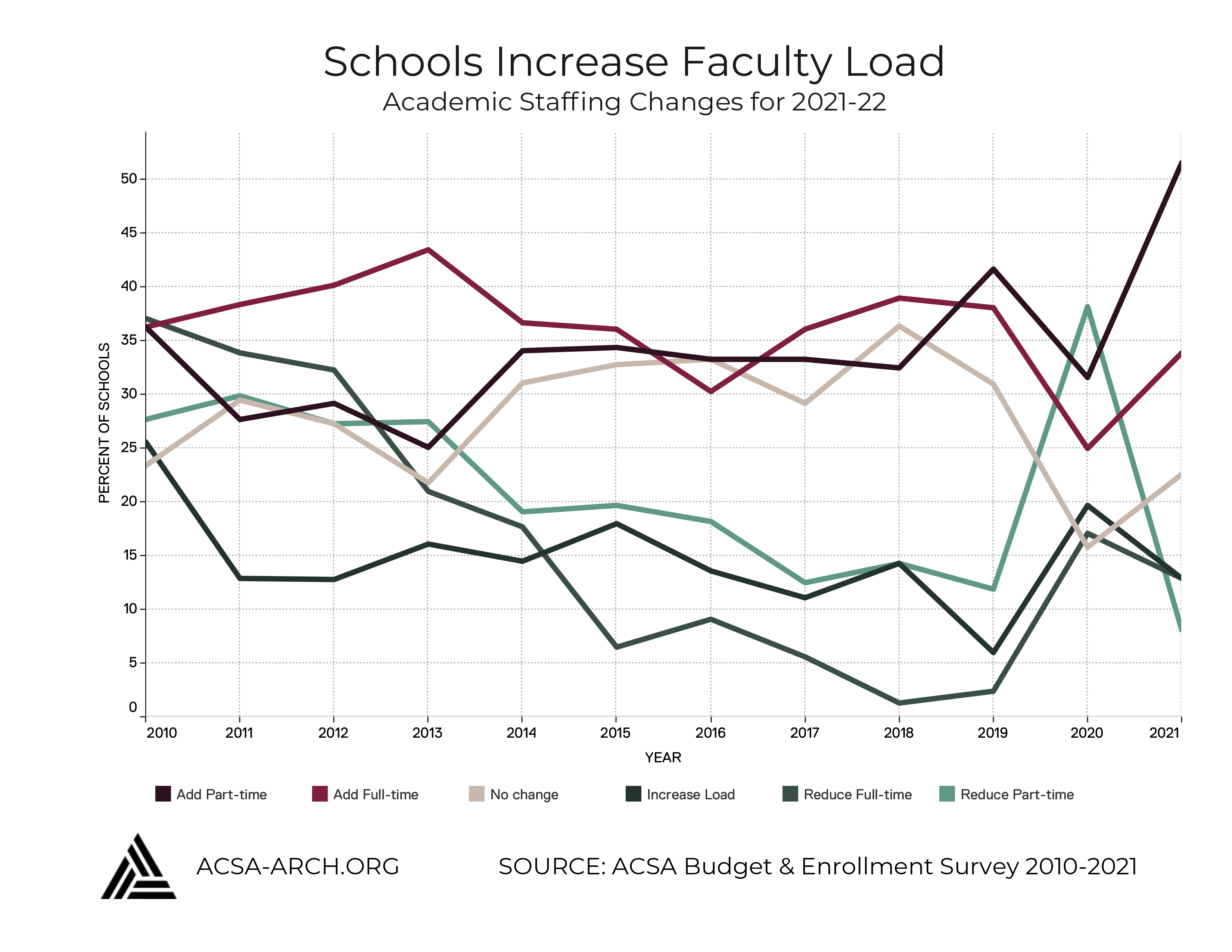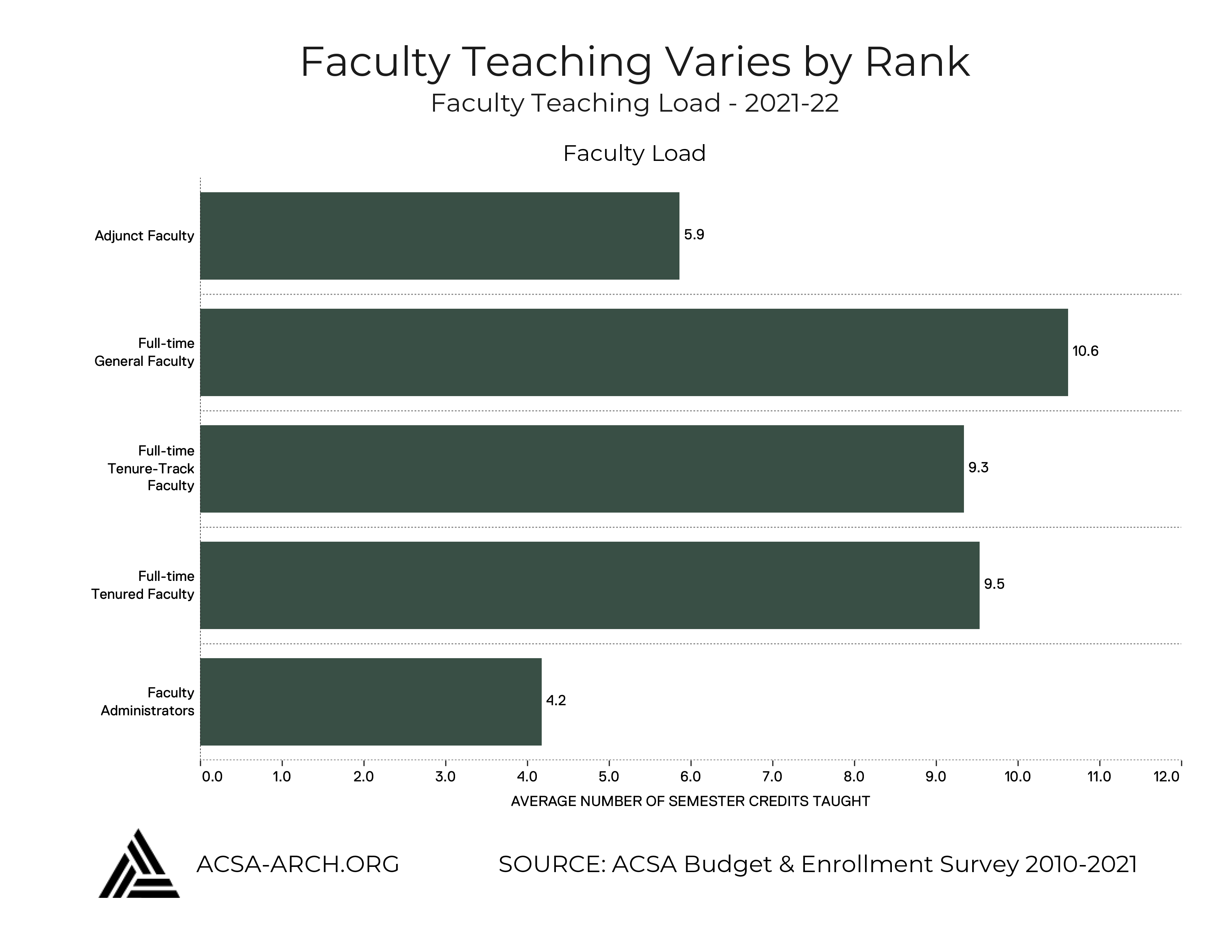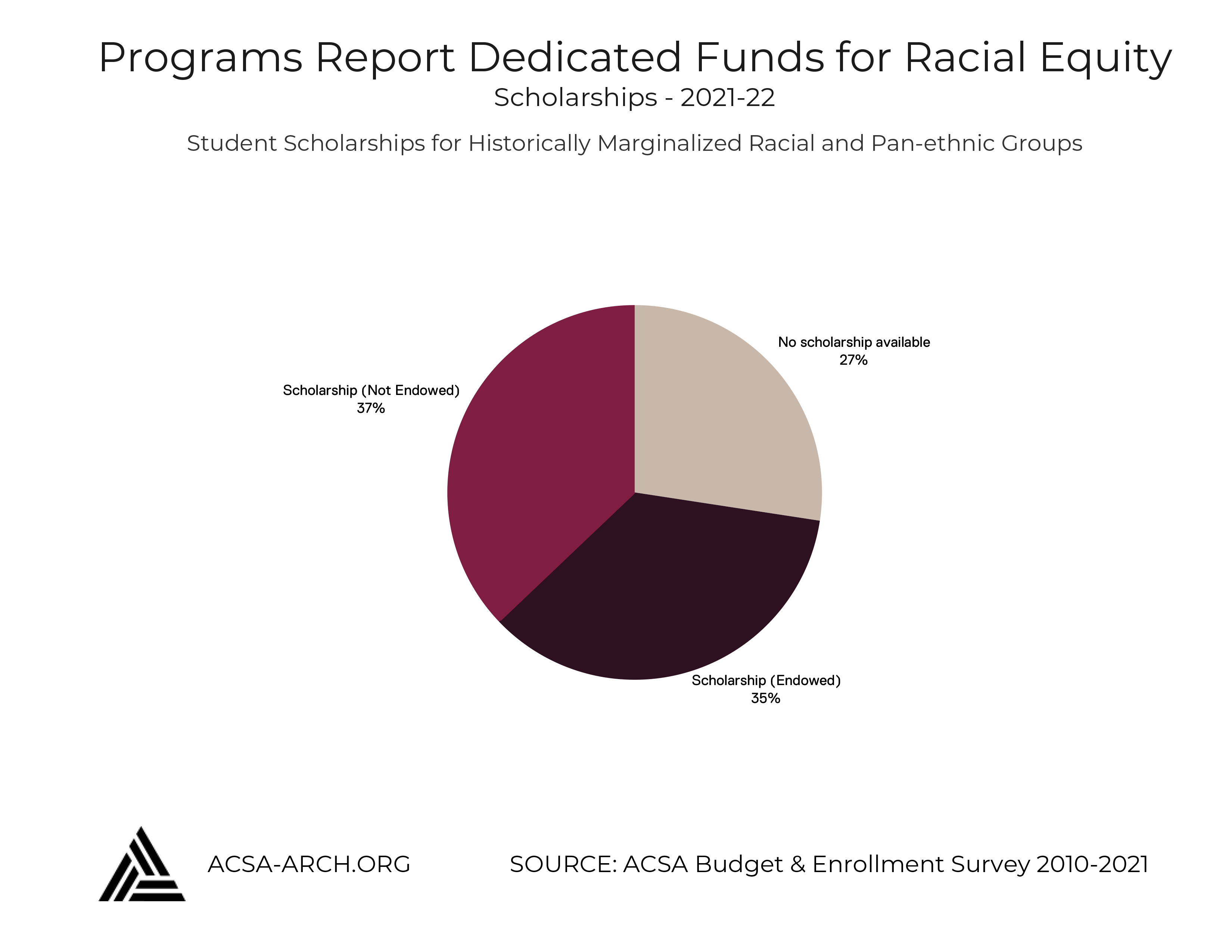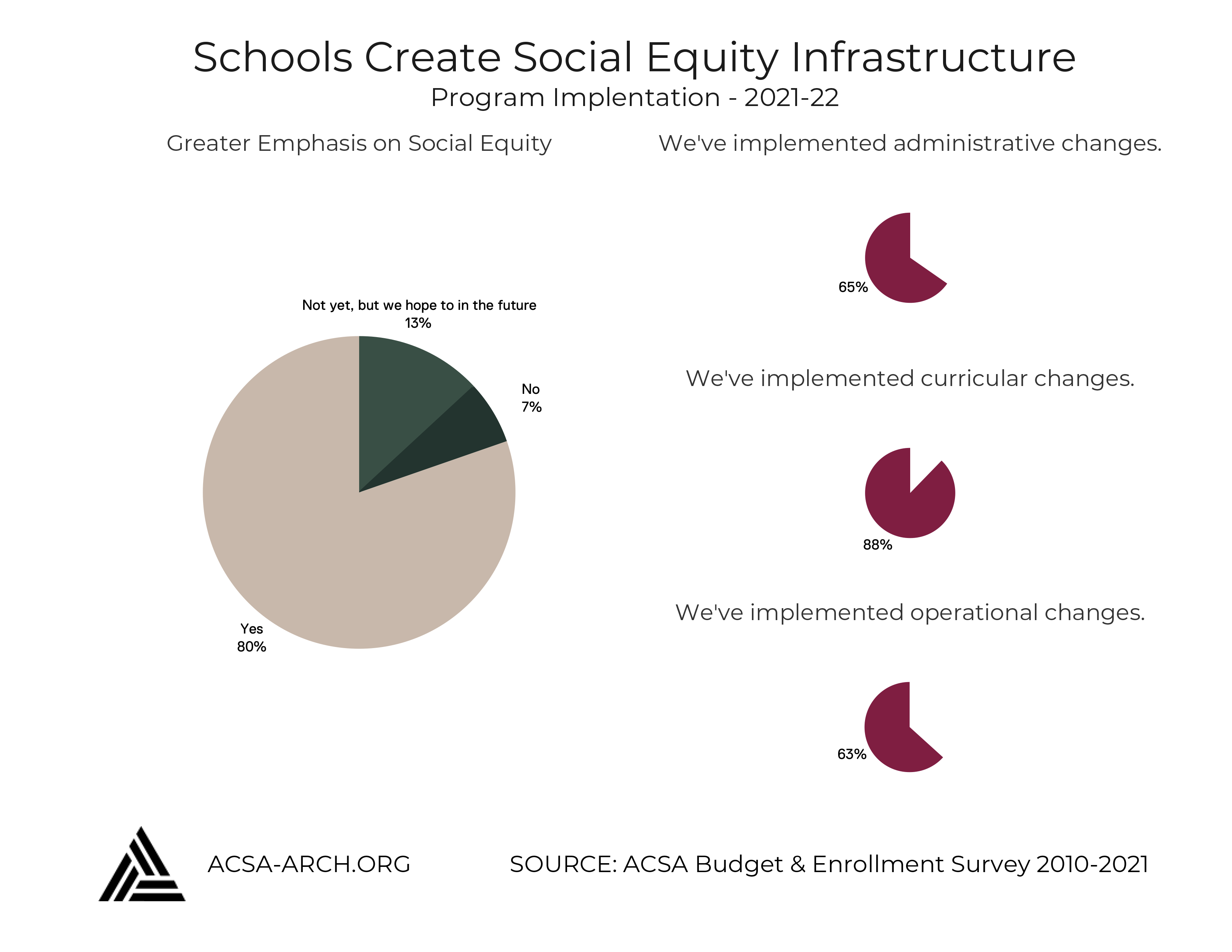Budget and Enrollment Survey Results
This year’s Budget and Enrollment Survey reflects budget, applications, enrollment, program metrics, implementing equity, and academic staffing changes at 67 member schools. The survey was made available to all ACSA member institutions, including 2-year, 4-year, and international programs. The survey is conducted annually and this report includes data collection dating as far back as the 2010-11 academic year. The purpose of this report is (1) to provide a cross-section of information regarding the current status of funding and admissions at architecture schools, (2) identify any ongoing trends survey results may suggest, and (3) answer some frequently asked questions by program administrators. An analysis of the budget and enrollment sections is provided below.
PART 1: ARCHITECTURE PROGRAM BUDGETS
Total budgets for the 2021-22 academic year are presently on the rebound. While the COVID-19 pandemic is ongoing, budgets reported an upward trend. More specifically, the percent of programs that reported a large decrease (More than -6%) decreased from 43% last year to 21% this year. Increasing budgets for this year account for 37% of all reporting programs. Projections for the coming year show continued increases with the hopes that more schools will report no change or increases.
As seen in this graph, increasingly restrictive COVID-19 regulations hit travel budgets hard last year. Following the trend of total budgets, most schools reported either no change or an increase to travel budgets. Key changes in reporting between 2020-21 and 2021-22 show an almost 15% increase in the number of programs reporting a large increase (More than +6%) and a 31% reduction of programs reporting a large decrease (More than -6%).
The largest budgets showing no change were discretionary budgets. Just over half (52%) of the participating programs reported no change implying general stability. The percent of programs reporting decreasing discretionary budgets has returned to its 2019-20 levels. Last year, the number of programs reporting decreases in discretionary budgets doubled the previous year, this year only 18% of the programs reported a decrease.
PART 2: ARCHITECTURE PROGRAM ENROLLMENT
Like last year, when examining the applications and enrollments for Pre-professional, B.Arch, M.Arch/D.Arch, and Post-professional degree programs, many of the results were inconclusive. However the M.Arch/D.Arch responses continued a positive trends as identified in past years. More than a third (35%) of the programs reported a significant increase (More than +15%) in M.Arch/D.Arch programs.
PART 3: OTHER PROGRAM FINDINGS
In contrast to last year, programs reported a rebound of faculty positions that are similar to budget trends. Part-time and full-time faculty are growing across programs. Our research shows a 9% increase in the percent of programs hiring full-time faculty, and a 20% increase in the percent of programs hiring part-time faculty. Subsequently, data show a 30% decrease in the percent of programs reducing part-time programs.
Last year, for the first time, we surveyed the programs on faculty teaching load. This year, the data show variety by faculty type and indicate that faculty who are administrators are expected to have the lightest if any teaching load, followed by adjunct faculty teaching an average equivalent to 6 semester credits. Tenured and tenured-track faculty average teaching approximately 2 or 3 courses each academic term or the equivalent of 9 semester credits.
Lastly, we asked schools if they implemented changes to provide more emphasis on social equity in architectural education. We are glad to report that 80% of the programs reported some implementation of new action to make the program more equitable. The most popular change is that of curricular reviews and curricular additions. Approximately two-thirds reported administrative and/or operational changes.
ACSA would like to thank all of the schools that shared their data in regards to budget, enrollment, applications and academic staffing. School participation is integral in our quest to provide a full and accurate picture of these dynamics across architecture schools.
Questions
Kendall Nicholson
Director of Research and Information
202-785-2324
knicholson@acsa-arch.org

 Study Architecture
Study Architecture  ProPEL
ProPEL 